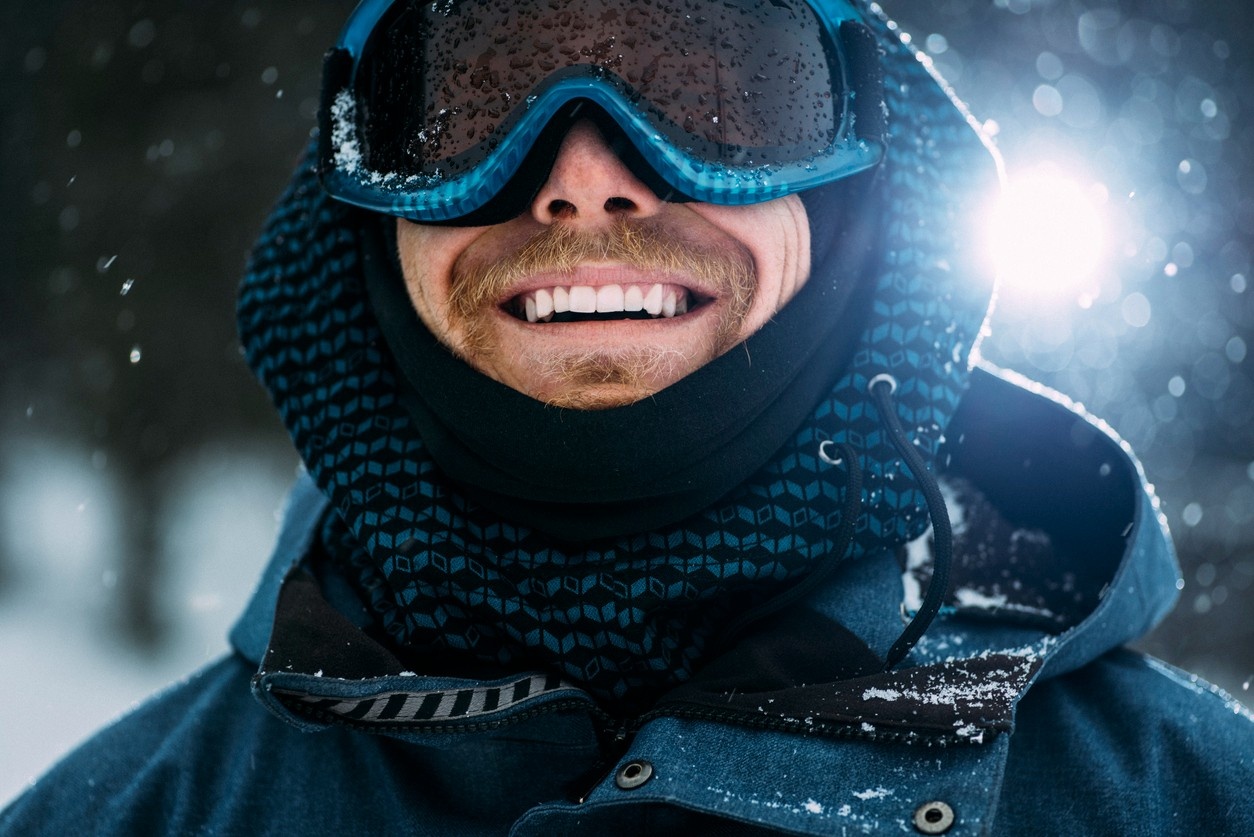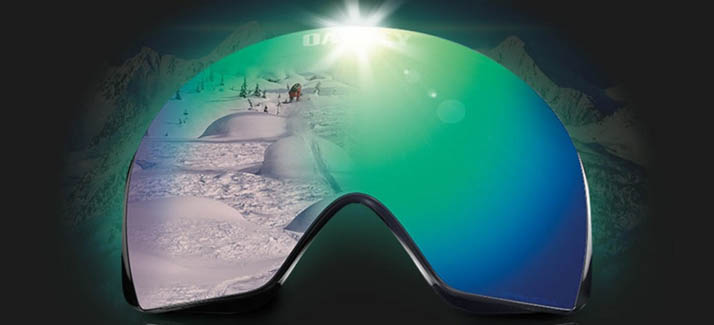Goggle Lenses Explained

Adapt to Your Environment
Heading out on the slopes? Whether you’re carving through fresh powder or navigating tricky terrain, having the right goggle lens can transform your experience—keeping you safe, comfortable, and seeing clearly in every condition. In this guide, we’ll walk you through everything you need to know about goggle lenses, from choosing the right tint and understanding VLT to weighing up the pros and cons of polarised and photochromic options
What Are the Different Types of Goggle Lenses?
Different lenses help you to adapt to the changes in light, enhancing the shadows and brightening contours so you don’t have to cut your day short if the sun goes in. There are lenses available that will help you to deal with almost every level of light exposure and most goggles come equipped with two lens options that are designed to handle the most common conditions.

LIGHT BRIGHT
Snow is a reflective surface and bright sunlight means a lot of glare, so you need a bright light lens to counteract it. Bright light lenses vary from brand to brand so look out for dark tints like copper and dark grey; lenses with a mirrored finish will reflect the light, enhancing the effectiveness of the tint.

MEDIUM LIGHT
On those changeable days where it isn’t gloomy but you haven’t been blessed with clear skies either, a green, rose, gold or amber tint (among others) will help you deal with varying light levels. Every brand has its own range of lens tints that have been specially tailored to provide better visibility in variable conditions; ask in-store for more information.

LOW LIGHT
Heavy cloud, fog and snowfall can cause very low light levels making it difficult to see bumps and contours in the snow. Low levels lenses often have a yellow, gold, amber or rose tint, which filter out the blue tones of the snow, emphasizing the shadows so that you can see bumps and undulations in the terrain.

What’s the Difference Between Cylindrical and Spherical Lenses?
When selecting goggles, you’ll often come across the terms “cylindrical” and “spherical” lenses. Cylindrical lenses are curved horizontally but remain flat vertically, giving them a sleek, low-profile appearance. These lenses are generally more affordable and provide good optical clarity, though they may introduce some distortion at the edges of your field of vision. This can be a minor issue for casual skiers, but for those who demand the best performance, it’s worth considering the alternatives.
Spherical lenses, on the other hand, curve both horizontally and vertically, closely mimicking the natural shape of the human eye. This design offers several advantages, including a wider field of view, reduced distortion, and superior optical clarity. The curvature of spherical lenses also helps to reduce glare by minimising the amount of light that reflects directly into your eyes. As a result, spherical lenses are particularly popular among advanced skiers and snowboarders who value maximum visibility and comfort at high speeds.
How Do Interchangeable Lens Systems Work?
Interchangeable lens systems have revolutionised the way skiers and snowboarders adapt to changing conditions on the mountain. These systems allow you to quickly and easily swap out your lenses, ensuring you always have the right tint for the current weather. Most modern goggles use either a clip-in or magnetic mechanism for lens changes.
Clip-in systems are found in many popular goggle models, such as the Oakley Airbrake and Smith I/O. These systems allow you to release the lens with a simple push or pull, making it possible to change lenses in just a few seconds. Magnetic systems, like those used in the Anon M1 and M2 goggles, use powerful magnets to hold the lens in place. This design makes lens changes even quicker and more convenient, especially when you’re wearing gloves.
Many top brands now include two lenses with their goggles—one for bright light and one for low light—so you’re prepared for any weather. This flexibility is invaluable for anyone who spends long days on the mountain, as it ensures you can maintain optimal visibility no matter how the conditions change.
.jpg/_jcr_content/renditions/cq5dam.web.320.320.jpeg)
What Are Photochromic and Electrochromic Lenses?
Photochromic and electrochromic lenses represent the cutting edge of goggle lens technology. Photochromic lenses are designed to automatically adjust their tint in response to changing light levels. When you move from bright sunlight into shadowy terrain, these lenses will darken or lighten to provide continuous optimal visibility. This makes them an excellent choice for skiers and snowboarders who frequently encounter variable conditions.
Electrochromic lenses take this adaptability to the next level by using an electric charge to change tint instantly at the push of a button. This allows you to fine-tune your vision with precision, ensuring you always have the right amount of light for your environment. While electrochromic lenses are typically more expensive, they offer unparalleled convenience and performance for those who want the very best.
What Is VLT and Why Does It Matter for Goggle Lenses?
Visible Light Transmission (VLT) is the percentage of light that passes through a goggle lens, directly affecting how well you can see in different mountain conditions. A low VLT (5–20%) is ideal for bright, sunny days, as it blocks glare and protects your eyes from strong sunlight, while a high VLT (40–80%) is better for overcast or flat light, allowing more light to reach your eyes and improving visibility in challenging conditions.
Choosing the right VLT is essential for comfort, safety, and performance on the slopes. Many experienced skiers and snowboarders carry two lenses with different VLTs, enabling them to adapt quickly as weather and light levels change throughout the day.
Are Polarised Lenses Suitable for Skiing and Snowboarding?
Polarised lenses are designed to reduce glare from reflective surfaces like snow and ice, making them a popular choice for sunny conditions where glare can be intense. They can help reduce eye strain and improve clarity, which is especially useful on bright, open slopes.
However, some skiers and snowboarders find that polarised lenses make it harder to spot icy patches, as the glare from ice helps distinguish it from snow. They may also affect depth perception in low-light conditions, so it’s important to consider your typical riding environment before choosing polarised lenses.
Which Lens Should I Choose for Different Terrain?
- Alpine (Above Treeline): In open, exposed terrain, you’ll want a darker lens with a lower VLT (Visible Light Transmission) to handle bright sun and reflected light.
- Glade (Below Treeline): In wooded areas with more shade, a medium or low light lens with a higher VLT is best, as it allows more light to reach your eyes and improves visibility in shadowy spots.
Expert Tips for Maintaining Your Goggle Lenses
- Keep Lenses Clean: Use a soft microfiber cloth to clean your lenses. Avoid wiping them with rough materials or your gloves.
- Store Properly: Keep your goggles in a protective case when not in use to prevent scratches.
- Avoid Touching the Inside: The anti-fog coating on the inside of the lens can be damaged by fingerprints or oils.
- Replace When Needed: If your lenses become scratched or damaged, replace them to maintain optimal visibility and safety.
FAQs
For sunny days, choose a dark tinted or mirrored lens with a low VLT to reduce glare and protect your eyes from bright sunlight.
While some photochromic or electrochromic lenses adapt to changing light, most skiers and snowboarders benefit from having at least two lenses—one for bright light and one for low light—to ensure the best visibility in all conditions.
Replace your lenses if they become scratched, damaged, or if visibility is compromised. With proper care, a good quality lens can last several seasons.
Spherical lenses offer superior optical clarity and a wider field of view, making them worth the investment for serious skiers and snowboarders who want the best performance.
Most modern goggles use clip-in or magnetic systems for quick and easy lens changes, even while wearing gloves.
Visible Light Transmission (VLT) refers to the percentage of light that passes through a goggle lens. It is a crucial factor in choosing the right lens for your environment. A low VLT (5–20%) means the lens is darker and blocks more light—ideal for bright, sunny days. A high VLT (40–100%) means the lens is lighter and lets in more light, which is better for overcast, foggy, or snowy conditions.
Polarised lenses are excellent at reducing glare from reflective surfaces, which is common on snow. However, some skiers and snowboarders find that polarised lenses can make it harder to spot icy patches, as the glare from ice helps distinguish it from snow. Additionally, some users report that polarised lenses can affect depth perception. For most riders, contrast-enhancing lenses are preferred, but polarised options can be beneficial if glare is a significant problem for you.
Most modern goggle lenses are designed to work with a wide range of helmets, but it’s always best to check compatibility before purchasing. Look for goggles and helmets from the same brand or those that advertise universal fit. Some brands offer goggle-helmet integration systems for a seamless fit and improved comfort.
Quality ski and snowboard goggle lenses provide full UV protection, regardless of their colour or tint. Always check the product specifications to ensure your goggles block 100% of UVA and UVB rays, which is essential for protecting your eyes from sun damage.
For overcast, foggy, or flat light conditions, yellow, orange, and rose tints are highly recommended. These colours enhance contrast and depth perception, making it easier to see bumps, contours, and changes in terrain. Amber and gold tints can also work well in moderate to variable light.
Related Articles

Let us know you agree to cookies
We use marketing, analytical and functional cookies as well as similar technologies to give you the best experience. Third parties, including social media platforms, often place tracking cookies on our site to show you personalised adverts outside of our website.
We store your cookie preferences for two years and you can edit your preferences via ‘manage cookies’ or through the cookie policy at the bottom of every page. For more information, please see our cookie policy.





